The vegetarian diet helps prevent cancer and other serious diseases (from heart attack to diabetes, from obesity to cardiovascular disorders) and to live well and for a long time.
Important scientific associations have been reporting for decades the benefits and healthiness of vegetable-based menus. The best summary is that expressed in its latest Position Paper by the American Academy of Nutrition and Dietetics: "Vegetarian diets, including vegan ones, properly planned [...] they can confer health benefits [...] are appropriate for individuals in all stages of the life cycle, including pregnancy, breastfeeding, early and second childhood».
It is therefore no coincidence that the number of those who follow them is increasing: the country, together with Germany, is the EU country with the most people who have given up on meat and fish.
Do you want to try a veg diet too? Here's everything you need to know. The doctor explains it Luciana Baroni, doctor, president of the Scientific Society of Vegetarian Nutrition and author of various books on the subject, including VegPlate, VegPlate_Mamy and VegPlate_Junior (all published by the Sonda publishing house).
SCIENTIFICALLY PROVEN TIPS FOR COMPOSING THE MENU
If you want to set aoptimal nutrition for health, based on plant foods, you can refer to the indications of the VegPlate, which was developed by Dr. Baroni based on the latest scientific research.
«Who is still omnivorous will be able to reap great benefits, starting to decrease the consumption of meat, fish, dairy products and eggs in favor of plant foods, learning a know what they are and how to use them»Says the expert. «You can also start by applying only 3-4 days a week the advice of the VegPlate, to then progressively reach 7 ».
PORTIONS VARY ACCORDING TO AGE, GENDER AND PHYSICAL ACTIVITY
VegPlate indicates for each food group (cereals, fats, etc.) the optimal number of "portions" you must consume in a day based on your energy needs (i.e. amount of calories which varies according to your age, gender and physical activity).
«By" portion "we do not mean a subjective quantity, but a precise gram value, different for each type of food », explains Dr. Baroni. "Let's take the example of the cereals to be included in the daily menu: if the ideal quantity of portions suggested by the VegPlate is 10, it doesn't mean you have to eat 10 plates of pasta (which among other things could be 70, 80, 100 or more grams, depending on the habits of each one) ".
A portion of cereals corresponds to a well-defined quantity (see the legend at the end of the article): they are 30 g of pasta (weighed raw) or rice or bread. Therefore, consuming 10 portions of cereals means bringing to the table: a 90g plate of pasta (3 portions), 120g of bread (4 portions) and a 90g plate of rice (3 portions). It is therefore important, for each food group, first understand what quantity a portion corresponds to; then determine how many are "due" for each food in order to meet our caloric needs and, finally, build our very personal "veg dish" choosing the "ingredients" we prefer (for each category) and using them to create always different and appetizing recipes.
If the idea of having to do everything on your own scares you (and you don't know how to move), don't worry: know that you just need to enter the website Piattoveg.info (edited by Dr. Baroni) to find with a few clicks (and without spending anything), the menu calibrated for you.
“After a few weeks on a diet you will already be able to weigh the foods to be eaten "by eye", without having to resort to the scales anymore », guarantees the expert.
DON'T GET ANXIETY CAUGHT IF YOU SOMETIMES RUN
"If you realize that one day you ate" too much "of one food and too little of another, do not worry: you will recover the next day»Reassures the president of the Scientific Society of Vegetarian Nutrition. «Not being completely" loyal "does not mean facing who knows what dangers. The rules we have explained in this service they must not be a source of anxiety or worry: on the contrary, they want to be a guide that allows us to make the most ofnutrition as a health promoter», Concludes the expert.
PORTIONS OK FOOD FOR FOOD
- Cereals
1 serving is equivalent to:
• 30 g of bread or crackers or rusks or wholemeal breadsticks
• 80 g weighed cooked or 30 g weighed raw of grain cereals (rice, barley, corn, wheat, spelled, kamut, oats, rye, quinoa)
• 30 g of flour
• 80 g cooked or 30 g raw of pasta, cous-cous, bulgur
• 30 g of popcorn
• 30 g of ready-to-eat breakfast cereals
• 200 ml of cereal milk
• 120 g of potatoes
- Vegetable proteins
1 serving is equivalent to:
• 80 g if cooked and 30 g if raw of legumes
• 80 g of tofu or tempeh
• 30 g of wheat gluten-based foods in combination or not with soy or legume flours
• 200 ml of soy milk
• 125 ml of soy yogurt
- Animal proteins
«My advice is to consume minimally milk and derivatives and eggs (at most 20-40 g of cheese, 2-3 times a week) », says Luciana Baroni.
1 serving is equivalent to:
• 200 ml of cow's milk
• 125 ml of cow's milk yogurt
• 20 g of cheese
• 1 egg (no more than 1-2 times a week)
- Vegetables
1 serving is equivalent to:
• 100 g of raw or cooked vegetables
• 100 ml of vegetable juice
- Fruit
1 serving is equivalent to:
• 150 g of fresh fruit
• 150 g of cooked fruit
• 30 g of dried fresh fruit
• 150 ml of fruit juice
- Dried fruit and oil seeds
1 serving is equivalent to:
• 30 g of dried fruit cream
• 30 g of seed cream
• 30 g of dried fruit or seeds
- Fat
1 serving is equivalent to:
• 5 g of olive oil, mayonnaise or morbid margarine
- Foods rich in Omega-3
Like foods rich in calcium, they do not form a separate group, but belong to those of nuts, oil seeds and fats.
1 serving is equivalent to:
• 1 teaspoon, about 5 g, of linseed oil
• 3 teaspoons, about 10 g, of flax seeds to be consumed freshly ground
• 15 g of chia seeds
• 30 g (about 6) of shelled walnuts
THE 1400-CALORIE TYPE MENU
Here is the example of a vegetarian, balanced and healthy diet.
Provides every day: 7 servings of cereals, 3 of foods rich in proteins, 6 of vegetables, 1 of fruit, 1 of nuts and oilseeds and 1 of fats.
Provides: 57g of protein (17% of daily calories), 33g of fat (22% of daily calories), 213g of carbohydrates (61% of daily calories).
More: 45 g of fiber, 19 mg of iron, 1042 mg of calcium, 732 mg of sodium (equal to about 1,8 g of salt) 3661 mg of potassium, 11 mg of zinc.
THE LEGEND:
C = cereals, F = fruit, FS = nuts, G = fat, V = vegetables, P = foods rich in proteins.
(*) = 1 portion of foods rich in calcium, (**) = 2 portions of foods rich in calcium.
I foods rich in calcium are not a group of their own: they can belong to both cereals and vegetables, etc. Their portions they are not to be counted in addition to the others: you just have to check that there are at least 6 asterisks in the menu (the necessary quantity to guarantee the correct intake of this mineral).
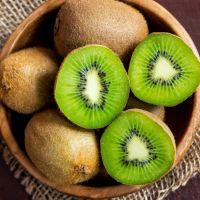
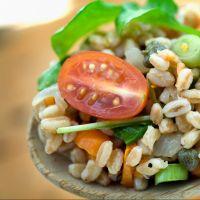
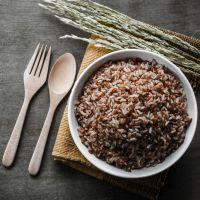
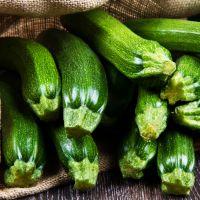
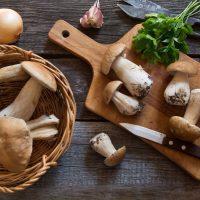
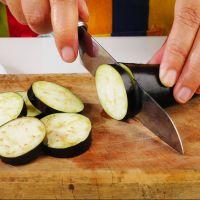
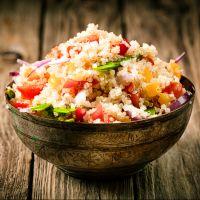
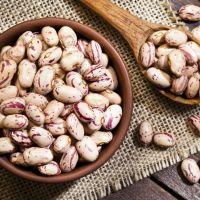

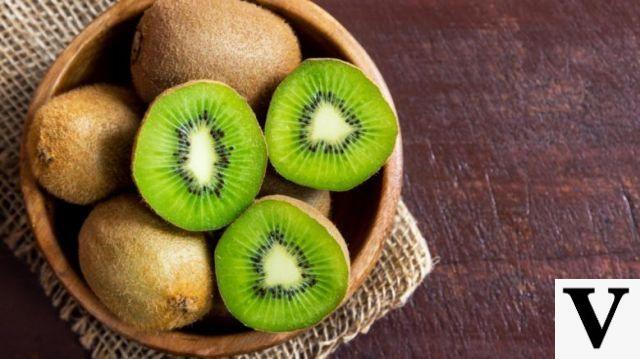
Everyday
Breakfast
• Vegetable milk of cereals of your choice with added calcium: 200 ml (1C) and (**) + Wholemeal bread: 30 g (1C) + Cream of dried fruit or seeds (tahini *, hazelnut cream, etc.): 20 g (2 / 3FS)
Mid morning
• Fresh fruit (for example 2 kiwis): 150 g (1F)
Mid afternoon
• Vegetable milk from cereals of your choice with added calcium: 200 ml (1C) and (**) + Popcorn: 15 g (0,5C)
In addition to the fats indicated in the menu
• Flaxseed oil: 1 teaspoon (1G) with dinner
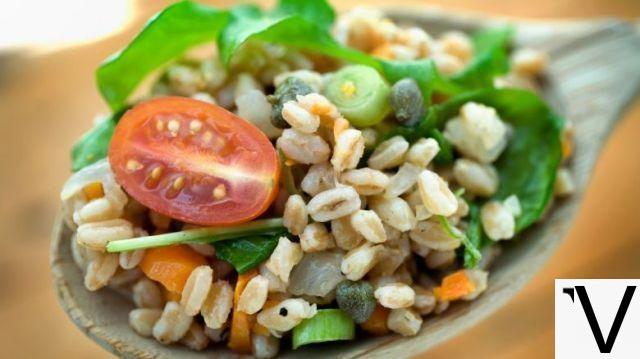
Monday
Lunch
• Spelled salad (single dish): 45 g of spelled (1,5C) + 100 g of courgettes (1V) + 100 g of aubergines (1V) + 50 g of peppers (0,5V) + boiled chickpeas, 90 g weighed dry or 240 g weighed cooked (3P) + 10 g of ground flaxseed (1 / 3FS).
Price
• Pasta with broccoli: 60 g of wholemeal pasta (2C) + 150 g of broccoli (1,5V) + 50 g of onion (0,5V) + 2 g of thyme (*)
• Salad: 50 g of lettuce (0,5V) + 100 g of tomatoes (1V)
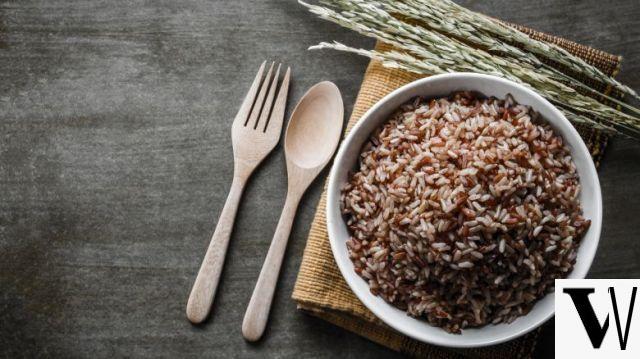
Tuesday
Lunch
• Brown risotto: 45 g of rice (1,5C) + 100 g of spinach (1V) + 10 g of ground flax seeds (1 / 3FS)
• Vegetable balls: 50 g of potatoes (0,5V) + 50 g of carrots (0,5V) + 100 g of cauliflower (1V) + 30 g of lentils, weighed dry (1P) + 5 g of mint (* )
• 100 g steamed Brussels sprouts (1V)
Price
• Pasta with tofu pesto: 60 g of wholemeal pasta (2C) + 40 g of crumbled tofu (0,5P) + 10 g of dried tomatoes (*)
• Beans with artichokes: 45 g of dry weighted beans (1,5P), 200 g of artichoke bottoms (2V)
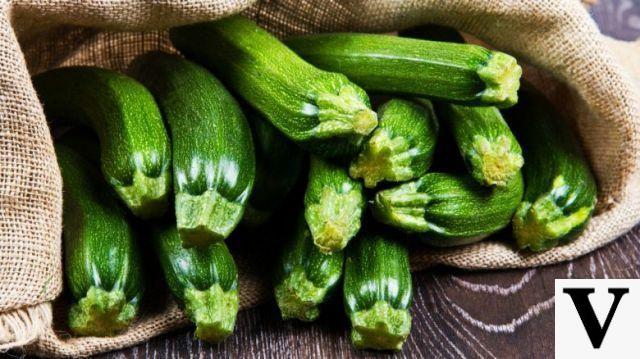
Wednesday
Lunch
• Pasta with seitan and curry: 60 g of wholemeal pasta (2C) + 30 g of seitan (1P) + 80 g of tofu (1P) + 50 g of onion (0,5V) + 1 g of curry (*) + 10 g of ground flaxseed (1 / 3FS)
• Sautéed courgettes: 250 g of courgettes (2,5V) + 50 g of onion (0,5V) + 2 g of thyme (*)
Price
• Bean and bulgur soup: beans, 30 g weighed dry or 80 g weighed cooked (1P) + 30 g of bulgur (1C) + 15 g of croutons (0,5C)
• 250 g of baked peppers (2,5V)
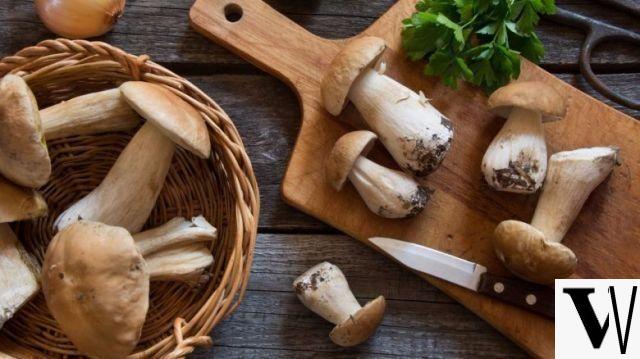
Thursday
Lunch
• Barley with porcini mushrooms: 45 g of barley (1,5C) + 50 g of onion (0,5V) + 100 g of porcini mushrooms (1V) + 2 g of thyme (*) + 10 g of ground flax seeds ( 1 / 3FS)
• Baked pumpkin and leeks: 200 g of pumpkin (2V) + 50 g of leek (0,5V) + 5 g of rosemary (*)
Price
• Garlic and oil pasta: 60 g of wholemeal pasta (2C) + 5 g of garlic (*) + olive oil (1G) + chilli (*) + 3 g of marjoram (*)
• Chickpea and rocket salad: 90 g of dried or 240 g cooked chickpeas (3P) + 10 g of parsley (*) + 2 g of thyme (*) + 10 g of ground rocket (1V) + 100 g of cherry tomatoes (1V) + lemon to taste (*)
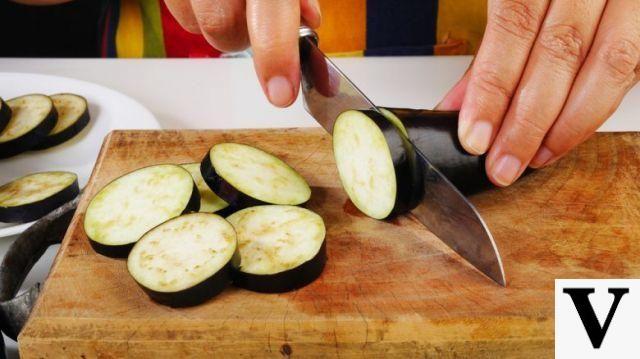
Friday
Lunch
• Basil pasta: 60 g of wholemeal pasta (2C) + 40 g of tofu (0,5P) + 10 g of basil (*) + 10 g of ground flaxseed (1 / 3FS)
• Cannellini beans cream: 45 g of raw weighted cannellini beans or 120 g cooked weighted cannellini beans (1,5P) + 3 g of thyme (*)
• Grilled aubergines: 200 g of aubergines (2V) + 5 g of chopped parsley (*)
Price
• Risotto with asparagus: 45 g of brown rice (1,5C) + 150 g of asparagus (1,5V) + 50 g of onion (0,5V)
• Marinated tempeh: 80 g of tempeh (1P) + 10 g of dried tomatoes (*) + 200 g of ripe tomatoes (2V) + 10 g of black olives (*)
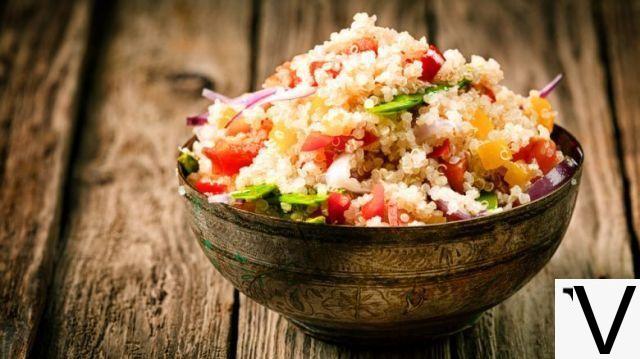
Saturday
Lunch
• Quinoa salad with peppers: 45 g of quinoa (1,5C) + 10 g of olive paté (*) + 100 g of peppers (1V) + 5 g of capers (*) + 5 g of basil (*) + 10 g of ground flaxseed (1 / 3FS)
• Broad beans stewed with chicory: 45 g of dried or 120 g weighed cooked broad beans (1,5P) + 150 g of chicory (1,5V) + 5 g of garlic (*)
Price
• Raw zucchini spaghetti: 200 g zucchini (2V) + 100 g black cabbage pâté (1V) + 2 g thyme (*)
• Kamut with lentils: 60 g of kamut (2,5C) + 50 g of onion (0,5V) + 45 g of dried lentils or 120 g of cooked ones (1,5P) + 2 g of cumin
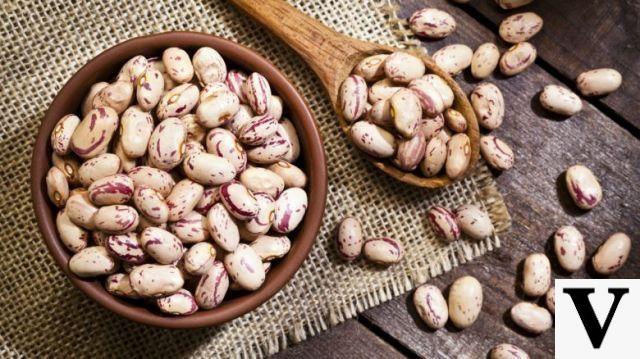
Sunday
Lunch
• Farrotto with artichokes: 45 g of spelled (1,5C) + 50 g of artichokes (0,5V) + 50 g of onion (0,5V) + 5 g of garlic (*) + 10 g of ground flax seeds (1 / 3FS)
• Borlotti bean salad: 30 g of dried beans or 80 g of cooked ones (1P) + 200 g of beetroot (2V)
Price
• Spaghetti with peppers: 60 g of wholemeal spaghetti (2C) + cream of 100 g of peppers (1V)
• Lentils with tomato: 60 g of dried red lentils (2P) + 50 g of tomato paste (0,5V) + 5 g of rosemary (*)
• Savoy cabbage salad: 50 g of green cabbage (0,5V) + 50 g of red cabbage (0,5V) + 50 g of fennel (0,5V) + lemon (*) + ginger
- READ ALSO: Vegetarian diet: 5 tips for switching to the veg menu


























